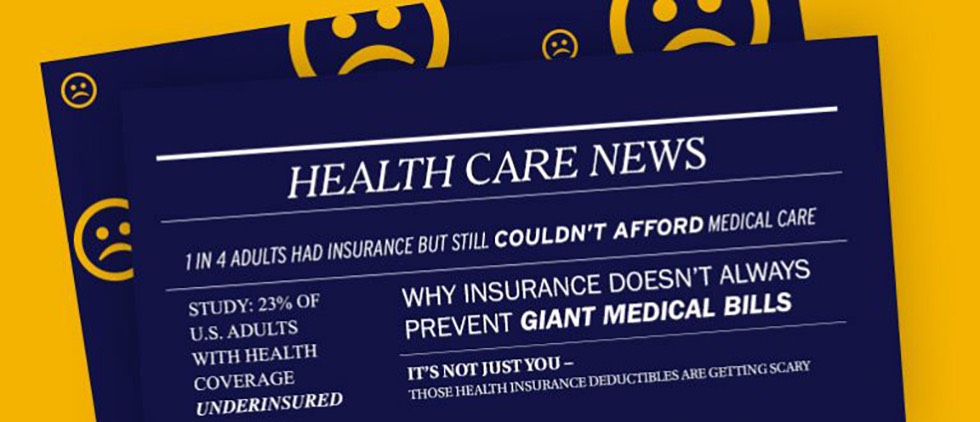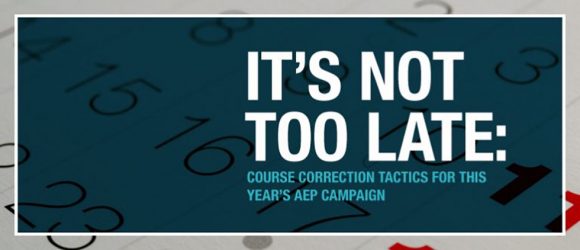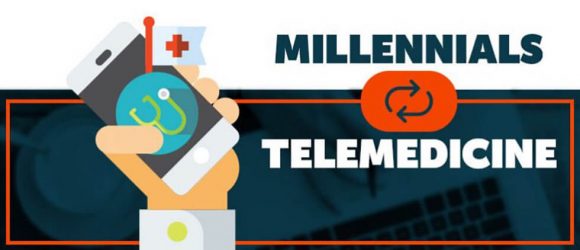Health Insurers: Do Consumers Think Your Health Plans Are “Worth It”?

According to Healthcare Finance, “Out-of-pocket healthcare expenses are climbing – from $416 billion in 2014 to $608 billion in 2015.” Copayments are expected to grow at 9.5 percent annually. Premiums are expected to increase by 7.1 percent per year overall.
You don’t need a degree in economics to see right away there’s a problem; these increases outpace wages and household income. And they come on the heels of one of the most dramatic cost-shifting periods the industry has seen: even individuals with insurance shoulder much of the cost of healthcare themselves thanks to deductibles and other factors.
It’s creating a situation where consumers are asking, “Why do I pay for insurance if it’s not going to protect me from financial struggle?” Consumers are used to that level protection from other kinds of insurance (like homeowner and auto coverage), and as healthcare costs have risen so dramatically, they’re starting to question why health insurance can’t offer the same assurances.
Of course, how much financial protection any policy offers (whether it’s for home, auto or health) depends on the level of coverage purchased. It’s just that in healthcare, determining how much coverage is needed and what’s affordable can be incredibly challenging for consumers. And so the doubts surface: “Is my health plan worth it?”
It’s more than a perception problem, and it’s about far more than whether consumers like their insurance companies or plans. The very real financial struggle creates a fundamental challenge: the industry’s bottom line requires consumers to see value in – and continue to pay for – health plans. We have some ideas about how insurers can address the issue, but first, just how serious is it?
Is health insurance “worth it”?
Following the release of several new surveys on healthcare costs, the headlines have been grim:
- “1 in 4 adults had insurance but still couldn’t afford medical care” (The Washington Post).
- “Study: 23% of U.S. adults with health coverage underinsured” (The New York Times).
- “It’s not just you – Those health insurance deductibles are getting scary” (The Huffington Post).
- “Underinsured may be the next healthcare crisis” (HealthLeaders).
- “Why insurance doesn’t always prevent giant medical bills” (The Upshot, a blog from The New York Times).
These news stories cite resources from Families USA, Commonwealth Fund and Kaiser Family Foundation. Statistics from these groups show that a huge number of individuals and families are underinsured, and many are going without care as a result.
Specifically, “25.2% who bought non-group health insurance last year went without needed care because they could not afford it – and high deductibles of $1,500 or more seem to be the leading cause for the missed care. … Medical tests, treatments and follow-up care were the most common types of care adults skipped,” according to the Families USA report. In addition, many opted to forego purchasing prescription drugs.
Commonwealth Fund data, based on interviews of those ages 19-64, shows that “31 million people with health coverage in the United States were underinsured in 2014.” Of those, 60% had coverage through their employers. A person or family is underinsured if out-of-pocket costs — not counting premiums — equal 10% or more of household income (or 5% for those closer to the national poverty level).
Those who were underinsured and had difficulty paying their medical bills faced significant financial consequences. According to the Commonwealth Fund study,
- 44% received a lower credit rating.
- 47% used all of their savings.
- 34% took on credit card debt.
- 9% took out a mortgage against their home or a loan.
- 7% declared bankruptcy.
Commonwealth Fund President David Blumenthal, as quoted in HealthLeaders, offers some perspective on these startling numbers and how they relate to perception of health coverage. He says, “It doesn’t mean [the underinsured] aren’t getting any benefits. It means they are still not adequately protected against the cost of illness. I don’t think it is fair to conclude that their insurance isn’t worth anything.” Without insurance, he said, the situation could be even worse: “They might be paying 20%, 30%, 40% of their income or more than their income on an annual basis if they had no insurance at all. One of the clear questions that arises is, ‘Are people who were previously uninsured better off with insurance, even though they are underinsured?’” (Blumenthal responds to his own question: “On balance, I think the answer is yes.”)
The issue, however, isn’t limited to those who are underinsured. Healthcare cost can be surprising (and not in a good way) in other circumstances, as well. Here are two examples:
- When the combination of premiums and deductibles is unaffordable – and a consumer is well enough to do so – some simply drop coverage altogether. As described in a recent report from Enroll America, when a consumer doesn’t understand a low premium’s relationship to a high deductible or how that deductible can impact the cost of regular necessities like prescriptions, that consumer fails to see value in paying for a health plan at all.
- The Atlantic recently published a piece on the agony of surprise medical bills, pointing to data from the Consumer Reports National Research Center that says nearly a third of privately insured Americans received a surprise medical bill in the past two years. Says The Atlantic, “Even for people with generous insurance plans, a trip to an in-network doctor can result in thousands of dollars in unexpected charges.”
What insurers can do
Whether it’s lack of awareness or comprehension or simple sticker shock, the extent to which consumers may perceive health insurance as an unfair expense ought to be concerning to insurers. And while the list of things that could be done to address it goes far beyond insurers (into public policy, for example), there are some things insurers can do in the short term. These strategic efforts have the potential to improve both the shopping and buying experiences, as well as overall member satisfaction, which should increase retention and improve insurers’ bottom line.
- Product design – Although there are dozens of insurance products for consumers to consider, are they designed with specific health and financial circumstances in mind? And can they be personalized to any degree? Can insurers offer base plans with a la carte add-ons? Can insurers offer perks or special benefits (free bottled water, gym memberships, etc.) to low utilizers to encourage them to continue coverage? Creative options may help insurers address the spectrum of needs: providing optimal benefits for those with large medical expenses while preserving the portion of their customer base with a low medical loss ratio (MLR).
- Decision support tools – Do insurers have the right tools in place to help consumers make the right decisions (both on-exchange and off)? Consumers must be able to both determine the kind of coverage they need and find the right balance of affordability between premiums and deductibles. Likely, most insurers need to enhance their tools. More needs to be done – and at a deeper level – to help people consider factors they’re not contemplating on their own. For starters, estimators and calculators may want to integrate a formula that warns consumers, based on income or other factors, about their risk for being underinsured if they select certain kinds of plans.
- Member communications – Even after consumers have selected plans and enrolled, many still need (and want) prompting on how to get the most out of their benefits. It’s important for insurers to take onboarding materials and other member communications to a new level. A recent report from Enroll America – “Framework on Health Insurance Literacy for the Outreach and Enrollment Community” – focuses on the connection between health insurance literacy (HIL) and retention. It says, “It is critical to give consumers the information they need and want at the appropriate times to motivate them to take action. … It will contribute to increased consumer satisfaction with their coverage and increase the likelihood that a consumer maintains coverage over time.”
- Provider education – While providers don’t manage a patient’s insurance, they do have an impact on the member experience, for example, in helping patients make decisions on follow-up care, such as diagnostic imaging and lab work. If insurers offered resources to providers and offices – like access to “look-up” tools that enable them to provide detailed cost and benefits information on various referral options – providers could more easily play a role in creating a positive member experience.
Despite progress with HIL, Enroll America says, “Health insurance policies, terms and concepts remain incredibly complex, and substantial gaps remain in the general public’s knowledge about health insurance. For some, these gaps in knowledge may result in buyer’s remorse, improper utilization of healthcare services and/or loss of coverage completely. … Generally speaking, people do not need to be health insurance experts to purchase and retain coverage, but they do need effective tools and resources at the appropriate times to make informed decisions so that they can maintain their coverage over time.”
It’s interesting to note that the Enroll America report determined that “sending emails or distributing fliers with HIL-specific content to newly enrolled consumers is not sufficient. … Consumers need information and tools that will help them make informed choices at the appropriate decision-making points (e.g. when selecting a plan and when using their coverage).” This not only gives a nod to the creation of more interactive and in-depth resources but also greater ongoing engagement between insurers and their customers.
The short story is this: the future will be brighter for insurers willing to implement new ways to deliver real and tangible value to their members. And that starts by making sure that they have the right coverage to meet their needs.









